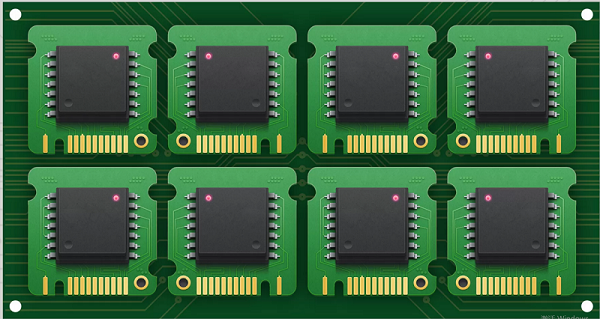
PCB Assembly requires a high level of expertise and efficiency. Panelization is a great way to speed up the process. Panelization is simply grouping together boards to increase processing speed. Panelization is common when there are high volumes of transactions or orders that need to be processed quickly. The smaller boards are grouped together to make it easier for them to be moved along the assembly line. The boards can be removed easily later.
Panelization Is Usually Carried Out in the Following Manner
The manufacturer must first make blank boards.
The designer then arranges the boards on a larger board. The number of layers can be more than 42 depending on the complexity. It is easier to layer boards with a regular form, as irregular shapes can be difficult.
Then as a single panel. The machine can fix the components easily to the board.
It Is also Important to Take Into Consideration the Following:
1. Strength of the array: In general, the strength of the array is increased by increasing the number boards.
2. Layout: It is important to think about the placement of sensitive components near the edges.
3. Shape: Use this option when processing rectangular shapes.
4. Tool holes: The array often provides space for toolholes for automated testing.
Benefits of PCB Panelization
Panelization of PCBs can increase production efficiency. Panelization has many advantages.
1. Batch production is a great way to optimize batch production and save time.
2. Assembly involves vibrations. Panelization is a way to protect PCBs against corrosion
3. When you are processing multiple boards, speed becomes a necessity. The welding and testing process become faster
however, panelization has some limitations. For example, it's not very useful for PCB manufacturing in low volumes. Panelization is also restricted by these factors:
1. Board thickness
2. Component weight
3. Space between boards
To ensure panelization efficiency:
1. The boards' dimensions should be the same
2. The board's parameters must be the same.
3. It should be the same for copper distribution
Panelization Can Be Done in Several Ways:
1. Paneling with V-grooves: This is a method of paneling that involves creating V-shaped lines in between the boards. It's useful when there aren't any overhanging pieces.
2. Breakaway tabs: This is a way to punch holes between boards.
The design will determine whether V-score routing or tab routing should be used.
3. Shape: V-score routing is best for shapes that are regular, while tab route is better for shapes that are unusual.
4. Edge components: Tab routing is better than v score for components near the edge.
5. Edge Quality:Tab Routing is preferred for edge quality.
6. Time V scoring: The time needed is a better way to score the Time V.
7. Waste: V-score is preferred in terms of reducing material waste, thereby lowering the cost per board.
Here Are Some Guidelines for Panelization:
1. If you are routing rectangular panelizations with sides larger than 1.00 inch, add 100 mils to the PCBs. Also, include a border of 400 mils on the outside. If the length is less than 1.00 inches, you must add 100 mils between PCBs and a 400 mil border on the outside.
2. You need to add an additional 300 miles for PCBs that are not rectangular.
3. If you are using V-score, then there should be a space of 20 mils between the edge and the trace of the PCB, and 300 mils at the opposite side.
There are some exceptions that can be made to the rule of thumb above:
4. The distance between the PCBs must be included in the border to prevent component damage during depanelization.
5. Additional material is required between the panels to increase the mechanical strength in the event that the component is heavy.
When routing, another rule to remember is to keep the distance between the metal and PCB board at 5 mils. In the case of V rating, however, this clearance can be as high as 20 mil.
The size and shape the board will also determine the number of paging Tabs to be used.
Depaneling
Depaneling is the next step after SMT testing and processing. Depaneling can be performed in a variety of ways depending on the panelization technique chosen. Among them are:
1. Breaking with your hands
2. Cut along the V groove
3. Saw marks
4. Laser cutting
5. Punching out of the board, etc.
Shenzhen PCB Assembly SMT Processing: To summarize, panelization should be taken into consideration when designing. It will help to ensure that there are fewer delays and fewer redesigns.









